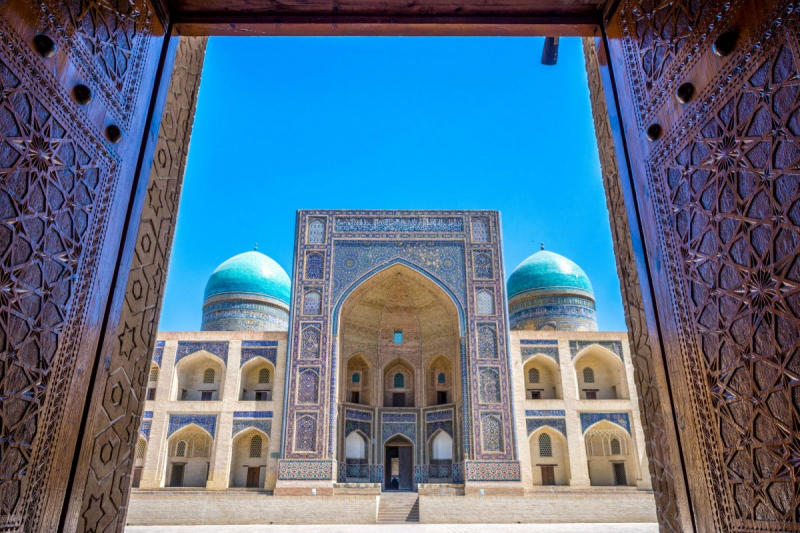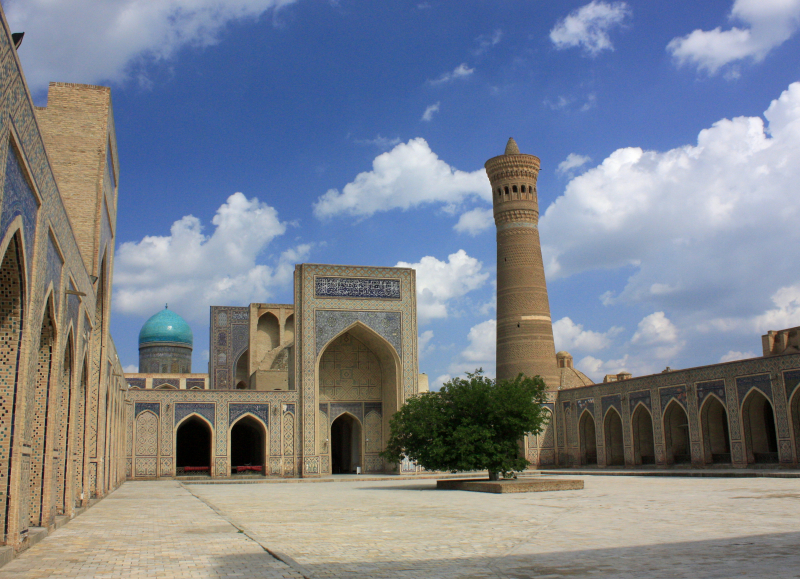Po-i-Kalan
The Po-i Kalan complex is Bukhara's spiritual core. The exquisite masonry of the Po-i Kalan minaret has stood since 1127, weathering earthquakes, cannonballs from the Red Army, and marauding marauders led by Genghis Khan. The Kalan mosque and the Mir-i Arab madrasah are mirror images of each other at the base of the 45-meter-high tower. The mosque was built on the foundation of an earlier mosque from the eighth century that was destroyed by Genghis Khan's troops.
Built-in 1514, this 'new' mosque served as Bukhara's largest mosque, accommodating up to 10,000 attendees. The Mosque was closed during the Soviet invasion and reopened to the faithful in 1991. The minaret cannot be climbed by tourists, and the madrasah is operational, with visitors only allowed within the main court to avoid disturbing the students, but the Kalan mosque is open to the public.
The octagonal pavilion in front of the mihrab, built in the nineteenth century, is an intriguing late addition to the mosque. Some believe it was built to shade the emir during his weekly visits, while others say it marks the ancient well that has been used for ages for ritual ablutions. It was most likely used as an early tannoy system, with a second imam echoing the first's words and movements for the congregation's benefit.
City: Bukhara








